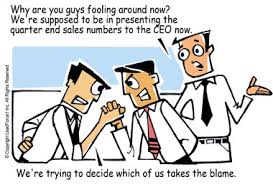One of the most important parts of marketing, is also one of the most forgotten, says Benjamin Stein, senior campaign marketing manager at Salesforce. Namely, sales enablement.
Sales enablement is the process by which marketers get sales teams materials to aid them in conversations and calls.
Unfortunately, marketers are so often focused on external efforts and reaching a broader audience, they forget to market to their internal audience, namely the sales team.
“Enablement is often something that falls off the plate,” Stein says. “If you’re pushing a message to the market, and your internal stakeholders aren’t on the same page, it’s a really big miss—and I’ve seen it a lot.”
Stein would know.
As a campaign marketing manager at Salesforce, Stein sits at the confluence of digital marketing, content marketing, product marketing, and sales. It’s his job to get content (and other marketing materials) in the right hands and the right places to have an impact. And one of the most important—but also most challenging—sets of hands he deals with is the sales team.
The problem is, marketers and sales teams don’t have the best history of good communication.
It’s why cartoons like this exist:

Sales teams don’t feel like they have the time to onboard marketing’s new materials, or they have a go-to pitch with go-to marketing material that’s worked in the past and they don’t want to ditch it.
But from the marketer’s perspective, this really misses the target.
Marketing’s objective is to deliver outbound messaging and thought leadership around certain topics. With the increase of buyers doing self-discovery and product research on their own, this makes it even more important for sales to be up-to-speed regarding the topics that marketers push.
If sales isn’t on board the marketing train, a conversation with a lead or prospect becomes disjointed.
In fact, B2B companies that fail to align sales and marketing teams around the right processes and technologies has cost them upwards of 10% or more of revenue per year ($100 million for a billion-dollar company).
Let’s use a hypothetical example to illustrated this point. If an inbound lead discovers a health insurance company after reading an eBook on the Health Care Recovery Act, that prospect is likely interested in continuing to talk about how the new bill affects them. However, if the salesperson calls that lead and immediately launches into a conversation about senior health care options and expenses, it won’t exactly “delight” that lead, and risks confusion and research into a new solution.
On the flip side, if the salesperson knew that the marketing team was pushing materials regarding ObamaCare education, the call could—quite fluidly—deliver the lead more relevant information.
Stein puts it well: “What’s the point of marketing a piece of content if the sales team says something different on the phone?”
Stein has four tips for marketers who want to execute a sales enablement strategy that works.
1. Appoint a Person Responsible for the Job
One of the first ways to ensure that sales enablement isn’t falling off the radar, is to make someone responsible for it. Appoint one person to be the liaison, or translator, for sales and marketing teams. It doesn’t mean you need to hire a new person, but marketers should name one person from their team responsible for communicating marketing’s messaging, key content launches, upcoming content releases, and what to expect for the quarter or year.
Melissa Madian is a great example of this role working successfully.
2. Hold “Marketing-Trains-the-Sales-Reps” Meetings
To get the whole organization on point with new marketing messages, put a training meeting on the calendar for all sales and marketing folks to attend once a quarter. During this meeting, have the marketing team leader train sales on the key messaging of each material, including:
- The targeted buyer persona for the material
- Which sales cycle the material is designed for
- Key talking points, stats, or information included in the material
- And where to find the resource (the website, inside a content marketing platform, etc.)
3. Incentivize Your Sales Team
Once you train up the reps, marketers can incentivize their sales counterparts by giving reps bonuses for closing deals brought in through the marketing campaign door. This is an approach Salesforces uses periodically for specific campaigns, and Stein says it works. The approach excites competitive sales teams, who are used to an incentive-based structure.
4. Hail the Good, Shame the Ugly
Feature the sales reps that are using marketing materials on calls, or create a “dashboard of shame” that features the leads or reps that aren’t getting a lot of attention. Though it may seem a bit cutthroat, the approach tends to work. Marketers and sales teams share visibility (if they are using the same technology platform) and individuals are either praised, or encouraged to do more with company-wide visibility. And also, the ol’ dashboard of shame can be pretty funny, too.
Putting strategies, people, and a plan behind sales enablement will inevitably make the process better. There is no perfect model, and even Stein says he’s constantly shifting and adjusting his approach for how he talks to his sales team.
But the effort to get sales behind marketing—and actually use content to facilitate sales objectives—can earn a company significant revenue growth.
Good luck, marketers.

